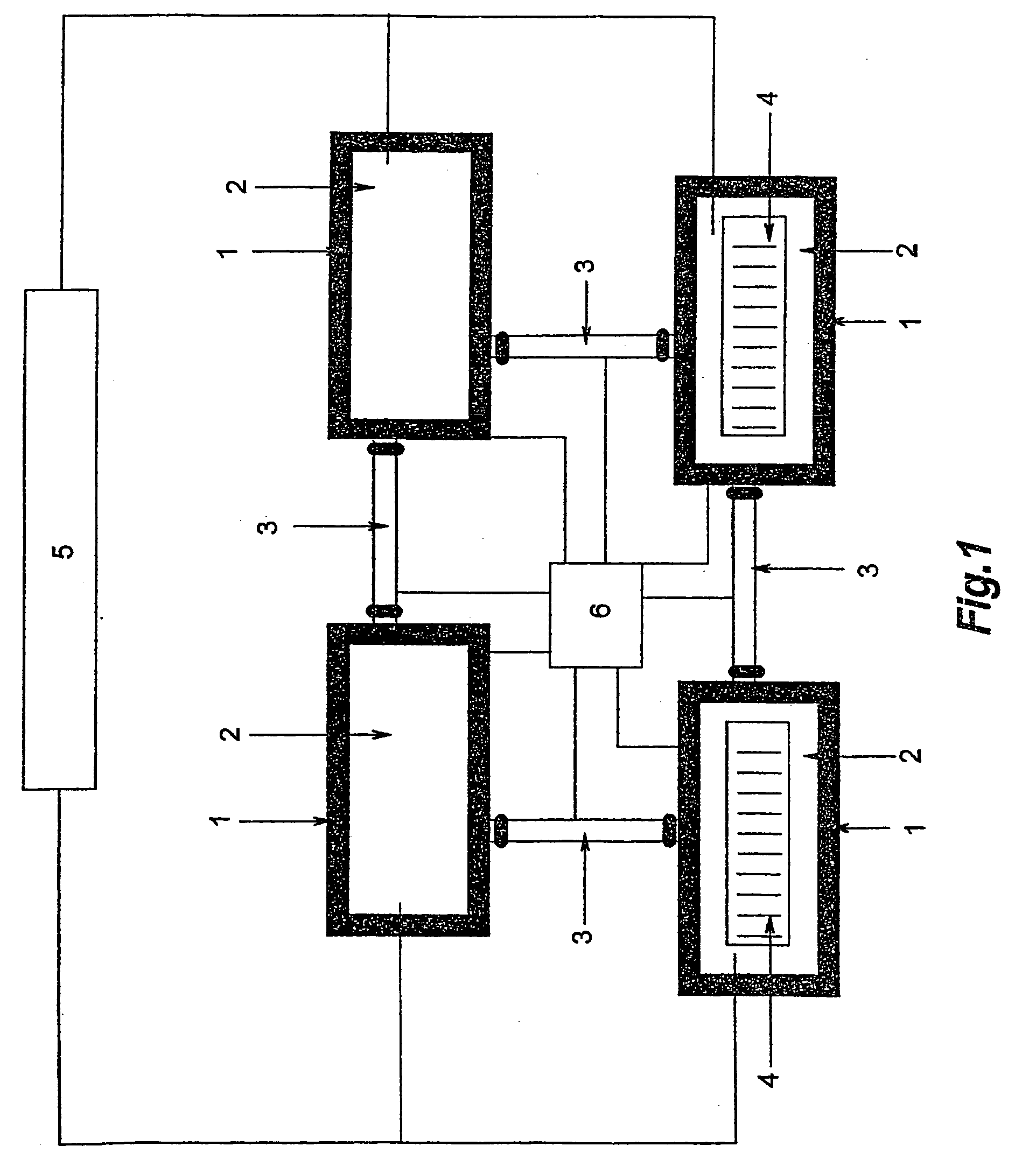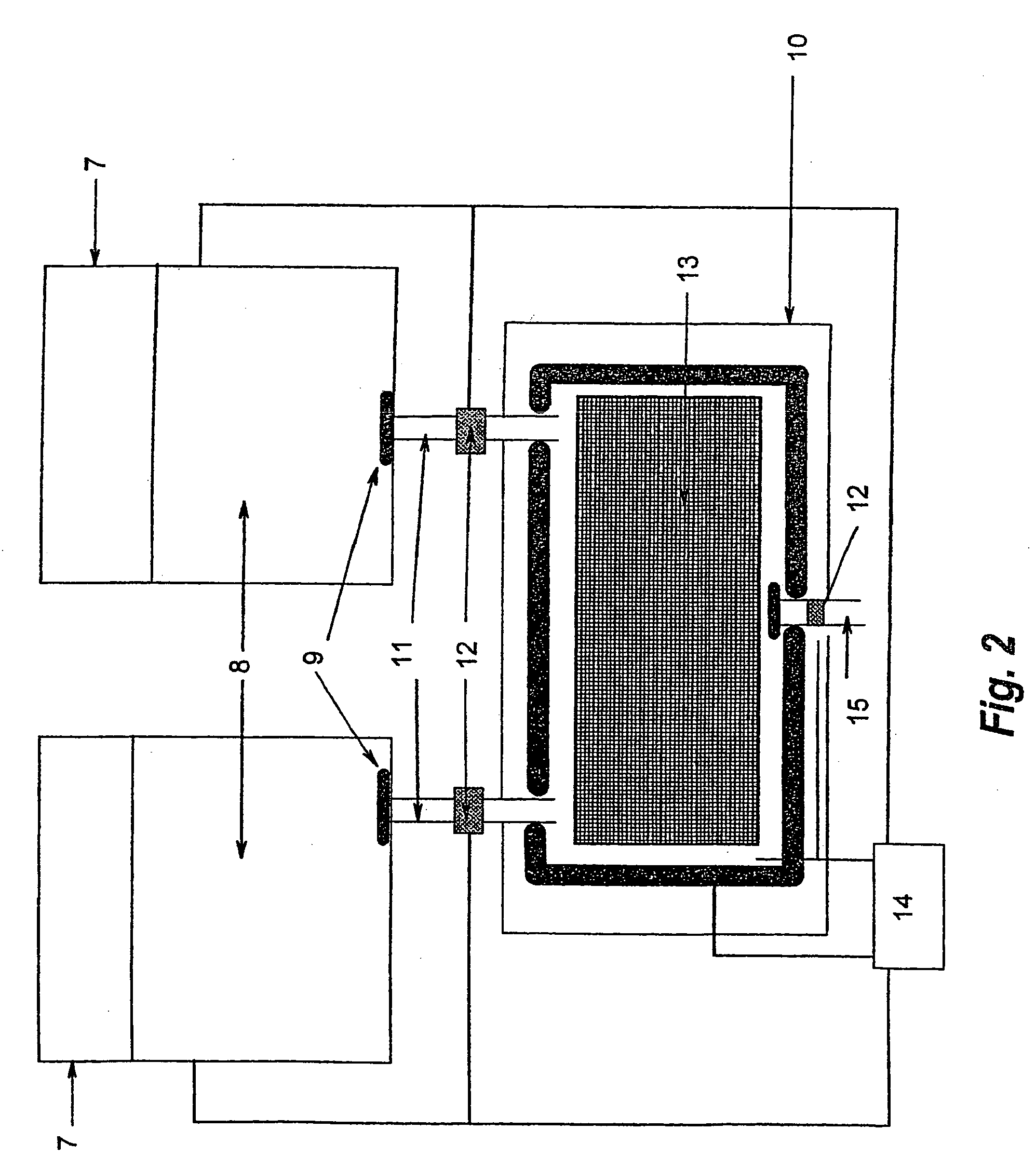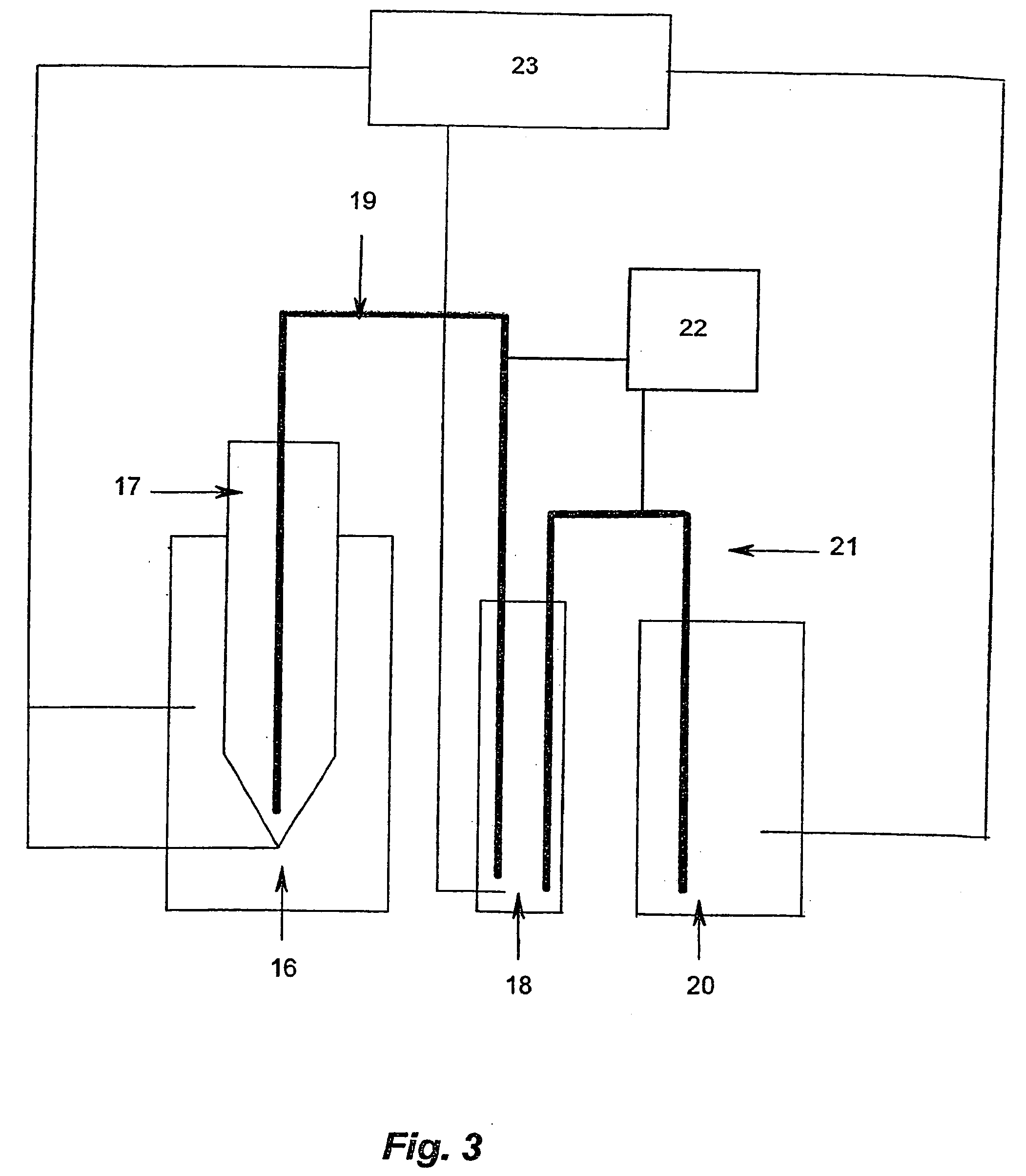Method and devices for dna methylation analysis
a methylation analysis and methylation technology, applied in biochemistry equipment, biochemistry equipment and processes, laboratory equipment, etc., can solve the problems of incomplete loss of epigenetic information carried by 5-methylcytosine during pcr amplification, inability to carry out 5-methylcytosine analysis using standard molecular biological tools, and limited utility of bisulphite treatmen
- Summary
- Abstract
- Description
- Claims
- Application Information
AI Technical Summary
Benefits of technology
Problems solved by technology
Method used
Image
Examples
example 1
[0069] Genomic DNA commercially available from Promega is used in the analysis. A CpG rich fragment of the regulatory region of the GSTPi gene is used in the analysis. The DNA is firstly artificially methylated at all cytosine 5 positions within the CpGs (upmethylation). The upmethylated DNA is then amplified using one round of PCR. The resultant amplificate is then divided into two samples, Sample A (the control sample) is amplified using conventional PCR. Sample B is amplified according to the disclosed method. The two samples are then compared in order to ascertain the presence of methylated CpG positions within Sample B. The comparison is carried out by means of a bisulphite treatment and analysis of the treated nucleic acids.
Upmethylation
Reagents:
[0070] DNA [0071] SssI Methylase (concentration 2 units / μl). [0072] SAM (S-adenosylmethionine) [0073]4,5μl Mss1-Buffer (NEB Buffer B+ (10 mM Tris-HCl 300 mM NaCl, 10 mM Tris-HCl, 0.1 mM EDTA, 1 mM dithiothreitol, 500 μg / ml BSA, 50%...
PUM
| Property | Measurement | Unit |
|---|---|---|
| temperature | aaaaa | aaaaa |
| melting temperatures | aaaaa | aaaaa |
| temperature | aaaaa | aaaaa |
Abstract
Description
Claims
Application Information
 Login to View More
Login to View More - R&D
- Intellectual Property
- Life Sciences
- Materials
- Tech Scout
- Unparalleled Data Quality
- Higher Quality Content
- 60% Fewer Hallucinations
Browse by: Latest US Patents, China's latest patents, Technical Efficacy Thesaurus, Application Domain, Technology Topic, Popular Technical Reports.
© 2025 PatSnap. All rights reserved.Legal|Privacy policy|Modern Slavery Act Transparency Statement|Sitemap|About US| Contact US: help@patsnap.com



